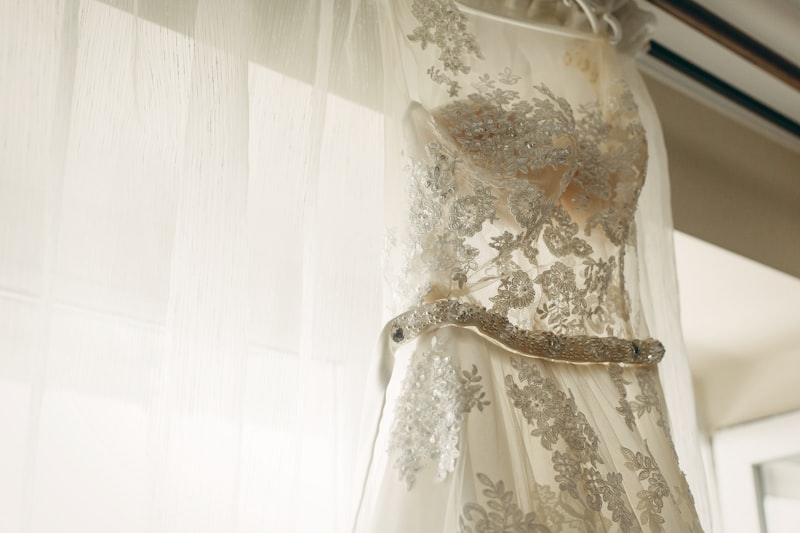Leveraging Tech in Custom Wedding Dress Design Processes: A New Era for Brides
Leveraging Tech in Custom Wedding Dress Design Processes: A New Era for Brides
In the world of weddings, the dress is often considered the centerpiece, a reflection of a bride's personal style and the overall theme of the big day. With the rapid advancement of technology, the way brides approach the design of their custom wedding dresses has evolved significantly. In this article, we will explore how technology is being leveraged in the custom wedding dress design process, the benefits it brings, and tips for integrating these tech innovations into your planning. We will delve into various aspects including 3D design software, virtual fittings, and custom fabric selection.
The Evolution of Custom Wedding Dress Design
Traditionally, designing a custom wedding dress meant endless fittings, fabric swatches, and consultations with seamstresses. Brides often faced long wait times and uncertainties about the end result. However, technology is revolutionizing this age-old process, making it more efficient and accessible. The integration of various tech tools allows for a more personalized experience while also saving time and minimizing costs.
1. 3D Design Software
One of the most significant advancements in custom wedding dress design has been the introduction of 3D design software. Tools such as Clo3D and TUKAcad allow designers to create virtual representations of garments. This technology enables brides to visualize their dresses before any fabric is ever cut.

| Benefits of 3D Design Software |
| 1. Accurate Visualization: Brides can see a realistic depiction of their dresses from different angles. |
| 2. Design Tweaks: Easy to make adjustments and see how they affect the overall design. |
| 3. Time-Saving: Reduces the need for multiple fittings as discrepancies can be caught in the design stage. |
| 4. Cost-Effective: Minimizes fabric waste by accurate planning before production begins. |
2. Virtual Fittings
The pandemic has taught us the importance of adaptability, and the wedding industry has taken this lesson to heart. Virtual fittings became popular as alterations were unavoidable. Now, many bridal boutiques and designers offer virtual fitting sessions using augmented reality (AR) technology. Programs such as Virtual Fit allow brides to try on dresses through a smartphone app or a computer webcam, making the experience more accessible.
With virtual fittings, brides can invite family and friends to join the session, no matter where they are located. This feature makes it easier to gather opinions and makes the bride feel supported in her decision-making process.
3. Custom Fabric and Material Selection
Technology has also revolutionized how fabrics are chosen for custom wedding dresses. With the use of digital fabric printing and e-commerce platforms that specialize in bridal fabrics, brides can now easily browse through thousands of material options from the comfort of their homes. Websites allow users to see high-resolution images of fabrics, providing a clear visual before any decisions are made.
| Advantages of Digital Fabric Sampling |
| 1. Diverse Options: Access to various fabrics from around the world at your fingertips. |
| 2. Comparison Shopping: Easily compare fabrics, prices, and review various suppliers. |
| 3. Swatch Delivery: Many services offer delivery of physical swatches, allowing brides to feel textures before purchasing. |
The Role of Artificial Intelligence in Design
Artificial Intelligence (AI) is making strides in the wedding dress sector. AI algorithms analyze trending styles, colors, and patterns to predict what will be popular. Some platforms even allow brides to use AI-driven recommendations based on their body type and personal style preferences. The integration of AI in design not only enhances creativity but also helps in delivering a personalized experience tailored to individual needs and desires.
Data-Driven Design Decisions
With the insights garnered from user behavior and preferences, designers can make informed choices about materials, styles, and even pricing strategies. This data-driven approach leads to higher satisfaction rates among brides, who can find dresses that perfectly match their vision and body type.
Bridging the Gap: Online and Offline Experiences
Even with technology streamlining the design process, the importance of in-person interactions shouldn’t be overlooked. Many design houses are blending online technologies with traditional fittings. The hybrid approach allows brides to experience the advantages of tech while still getting the personalized touch that comes from face-to-face consultations.
Tips for Optimizing Your Custom Dress Design Journey
- Research Your Options: Take your time to explore various designers who utilize technology in their processes. Assess their offerings and see what resonates with you.
- Utilize Virtual Tools: Don’t shy away from virtual fittings and design software. They can provide you with a level of convenience and visualization that traditional methods cannot.
- Communicate Openly: Make sure to discuss your ideas with your designer. The more they understand your vision, the better they can leverage technology to fulfill it.
- Set a Budget: Make your budget clear from the outset. Technology can sometimes lead to unexpected costs, so keep track of your spending.
- Embrace Flexibility: Be open to suggestions and modifications as you go through the process. Technology can change rapidly, so allow room for creativity.
Conclusion: The Future of Custom Wedding Dress Design
The integration of technology in custom wedding dress design processes has opened up a world of possibilities for brides. From advanced 3D design software to virtual fittings and artificial intelligence, these innovations are saving time, minimizing costs, and increasing satisfaction. As the wedding industry continues to embrace these advancements, brides can look forward to a more streamlined and enjoyable experience in bringing their dream wedding dress to life.
As you embark on your custom dress journey, remember to leverage these technological advances to your advantage and don’t hesitate to explore diverse options. Now is the perfect time to embrace the intersection of fashion and technology, ensuring your wedding dress reflects your unique style while also making the process as seamless as possible.
